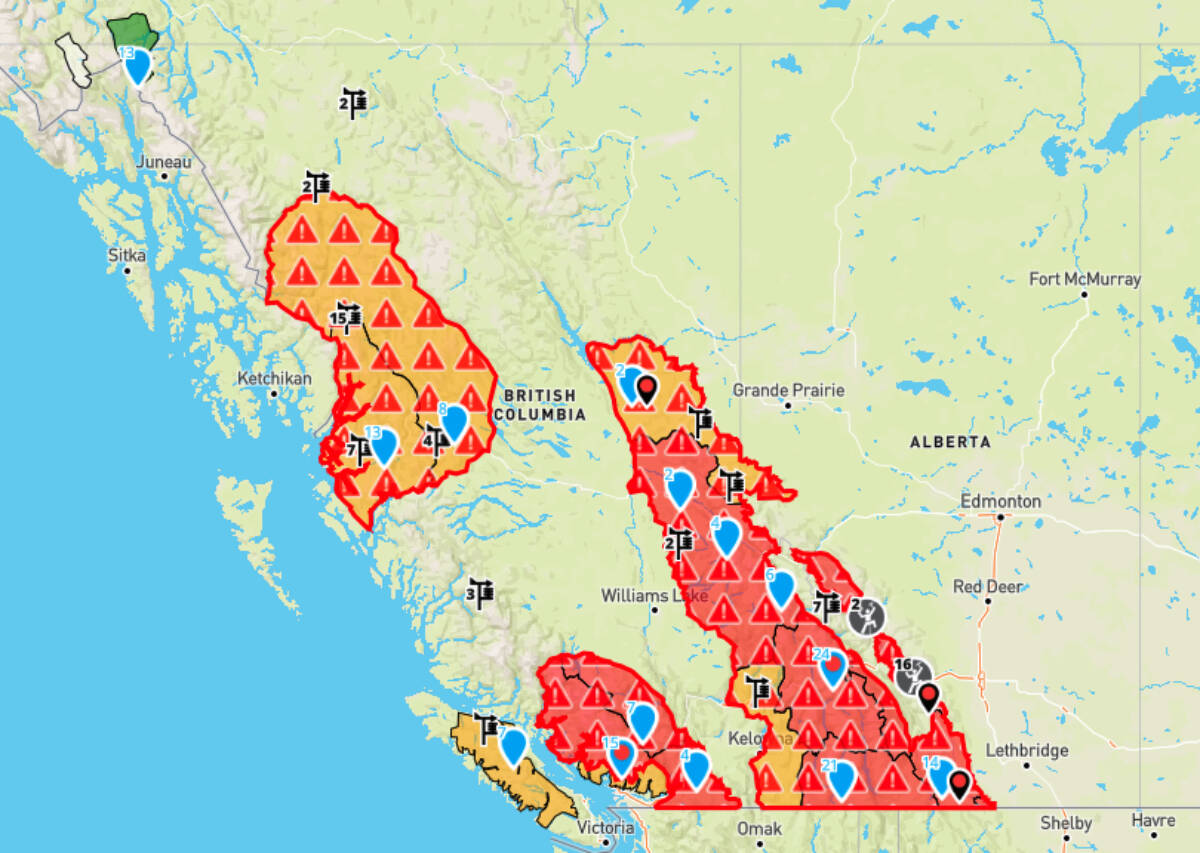A special avalanche warning has been issued for much of B.C. and southern Alberta, after a spate of recent storms has hiked the risk of human-triggered avalanches.
Avalanche Canada, in partnership with Parks Canada, Kananaskis Country, and the Province of B.C., issued the warning on Thursday, Feb. 29, for recreational backcountry users across most of B.C.’s and Alberta’s forecast regions.
The special warning is in effect immediately and will apply through the end of Monday, March 4.
Avalanche Canada Forecaster Tyson Rettie said that recent storms have deposited a significant amount of snow across Western Canada. This new snow sits on prominent weak layers established in early February. Now that the storms have abated, the natural avalanche activity has slowed but human-triggered avalanches remain likely.
“We’ve been tracking these weak layers closely over this past month,” Rettie said. “While their structure has different forms across different regions, the result is the same — highly problematic layers that remain reactive to human triggering.
“This has been the biggest storm of the season, and we know backcountry users are eager to enjoy the snow,” Rettie added. “But it’s vital to not underestimate the instability of these weak layers. Any avalanche triggered on them could be deadly.”
Making cautious terrain choices will be an important strategy for all backcountry users over the next few days. A good way to do this is by sticking to lower-angle slopes and choosing smaller objectives that minimize the consequences of an avalanche.
“Given the unpredictability of avalanches, and their devastating potential consequences, we’re urging everyone to stay safe by exercising caution and making informed decisions when planning a trip in the backcountry,” said Bowinn Ma, BC’s Minister of Emergency Management and Climate Readiness. “Please follow the guidance of Avalanche Canada during this time of heightened risk.”
Backcountry users should always check the avalanche forecast at www.avalanche.ca. Everyone in a backcountry party needs the essential rescue gear—transceiver, probe, and shovel—and the training to use it.

